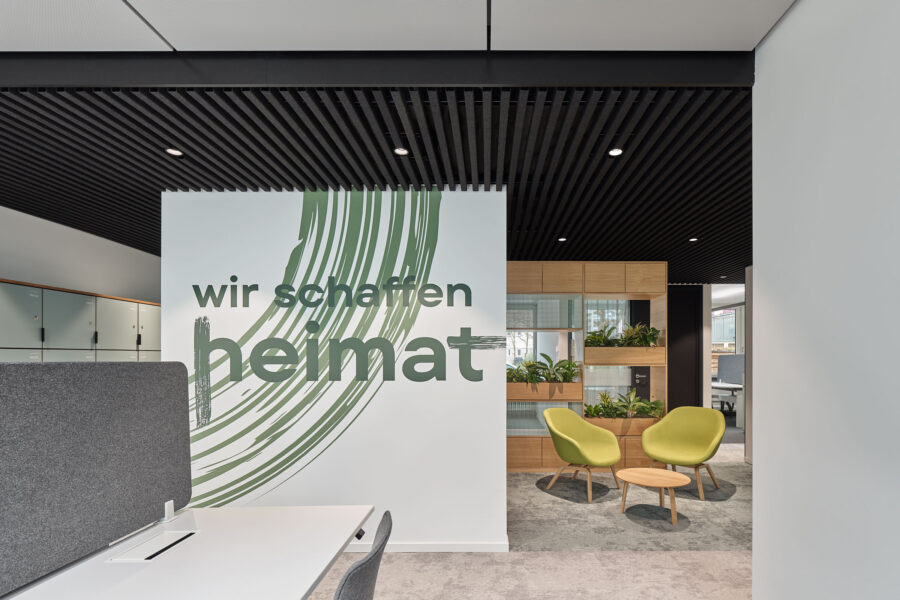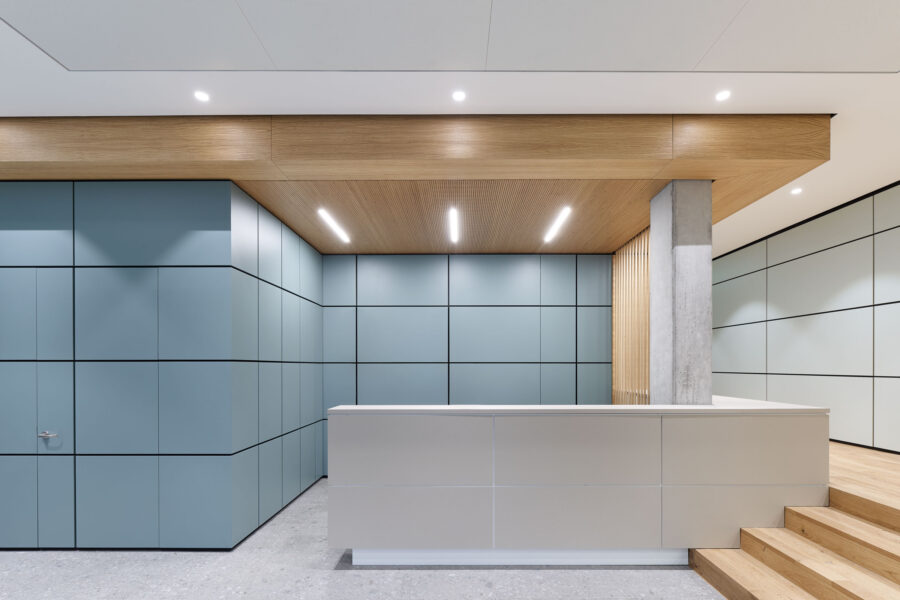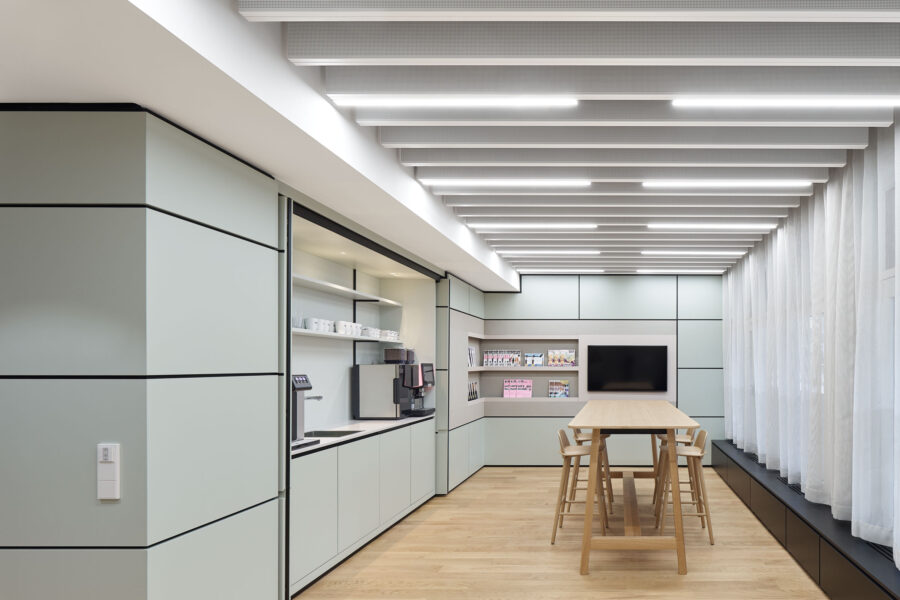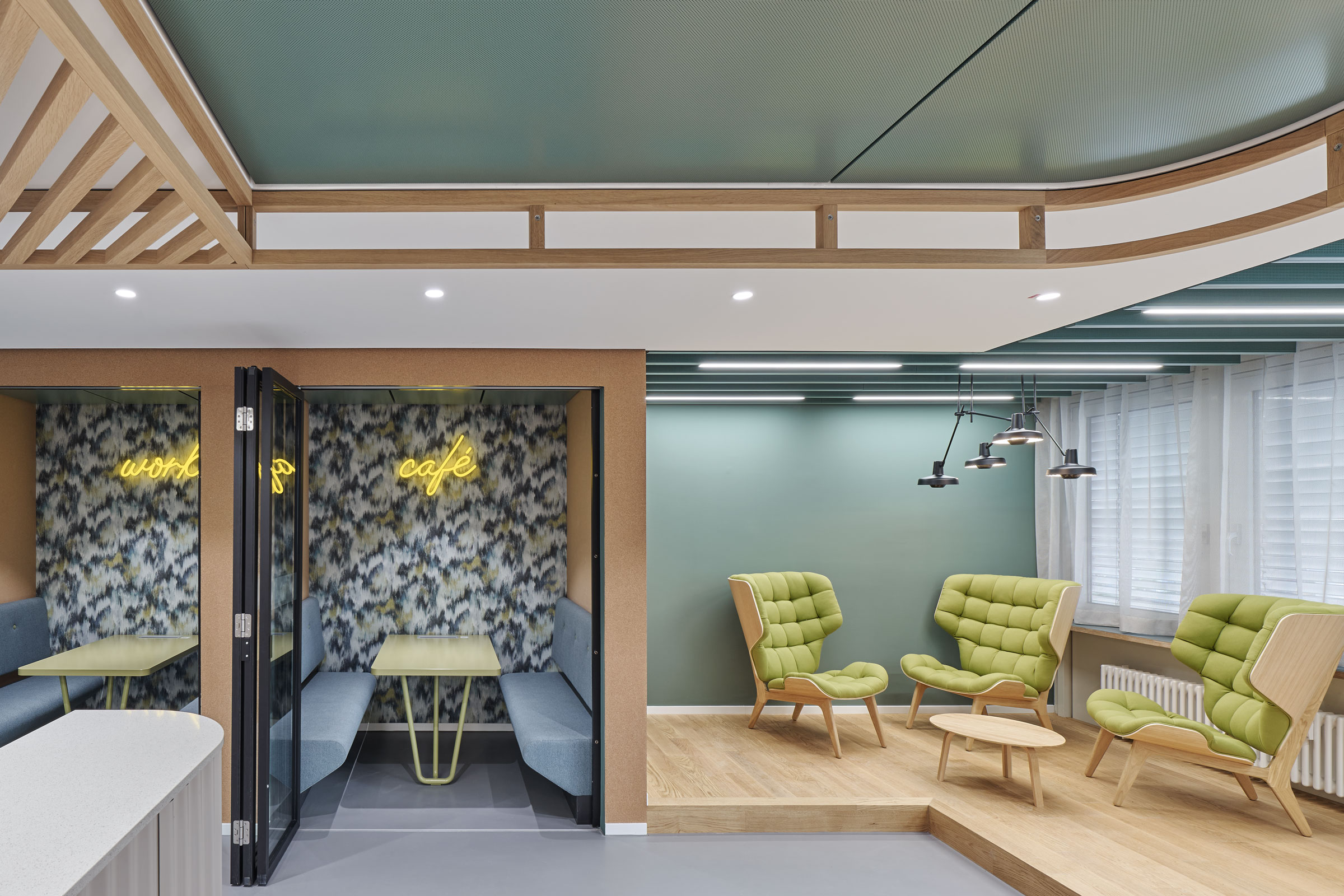Story at a glance:
- FLÜWO Headquarters was designed by SCOPE Architects in Germany and is a standout example of human-centric design.
- SCOPE designs from a user-oriented perspective to develop architecture from a multi-layered context of cultural and social aspects.
When SCOPE Architects set out to reinvent a 1980s office building, they knew they faced some serious challenges. For one, they were building partly on the existing structure. Plus, they had to upgrade the building to meet today’s standards—including structural fire protection.
“The goal of the extensive renovation was to create a new home for FLÜWO—currently one of the largest building cooperatives in Southern Germany—allowing employees to work in teams and providing space for informal communication,” says SCOPE Architects’ Kathrin Lewald, the project leader on the headquarters.
FLÜWO is situated on a four-lane main road in a mixed area of office and residential buildings. Inside, the design is at once colorful and warm, with comfortable seating areas and an emphasis on biophilic design.
Our vision is to create buildings that offer added value to society, meet the individual needs of the users, and handle the resource space responsibly.
We recently talked with Lewald to learn more about the project’s challenges and successes in sustainability:
How did you solve this project’s biggest challenges?
Sensitive dismantling and demolition work preserved various building elements such as the screed, shell, and facade. In addition, we developed individual and refined detailed solutions for the existing building.
How does this project fit the firm’s overall mission?

Plants and acoustic elements enhance privacy even in open spaces. Photo by Zooey Braun
We design from a user-oriented perspective and develop architecture from a multi-layered context of cultural and social aspects. Our work is characterized not only by the fulfillment of technical and formal qualities, but also by the assumption of social responsibility: Our vision is to create buildings that offer added value to society, meet the individual needs of the users, and handle the resource space responsibly. In a nutshell: “Creating human spaces.”
Tell us about the lighting in this project.

The work cafe features a mix of intelligent and natural lighting as well as plant life. Photo by Zooey Braun
The motto was flexibility, which we implemented using pendant luminaires with a grid arrangement between the cooling ceilings. This made it possible to place the workstations flexibly and independently of the lighting. The same applies to the meeting rooms, where power rails enable a free arrangement of the furniture and thus flexible use.
How did you design for acoustics?

Photo by Zooey Braun
In the workplace area, metal cooling ceilings and micro-perforation in light gray create a technical, rather cool atmosphere in contrast. The warm and soft felt slatted ceiling in the corridor areas with an additional layer of fleece forms a harmonious balance to this. In addition, carpeting and acoustic absorbers on the walls and between the workbenches optimize the acoustics.
How did you choose this color palette?

Contrasting materials are implemented with a clear design vocabulary in the entrance area. Photo by Zooey Braun
We chose a contrasting mix between light and dark surfaces combined with natural colors and materials such as oak wood, cork and multiplex. Colorful accents are set by different shades of green and exhilarating eye-catchers in bright green-yellow. Distinct graphic elements reflect FLÜWO’s cooperative ideals, guide visitors through the building, and create identification points.
How is the final space used?

Biophilic design was emphasized through addition of plants and natural light. Photo by Zooey Braun

Visitors are invited to chat at the guest café inside Flüwo. Photo by Zooey Braun
SCOPE created a differentiated and diverse working environment that promotes growth, change and agility across roughly 3,000 square meters. In addition to a central work café, spaces for creative work, workrooms for trainees, workshop areas, meeting rooms and a restaurant were created.
The concept allows additional utilization of meeting and communication areas through the creation of a sublet coworking space. The joint usage produces a lively and innovative working environment.



